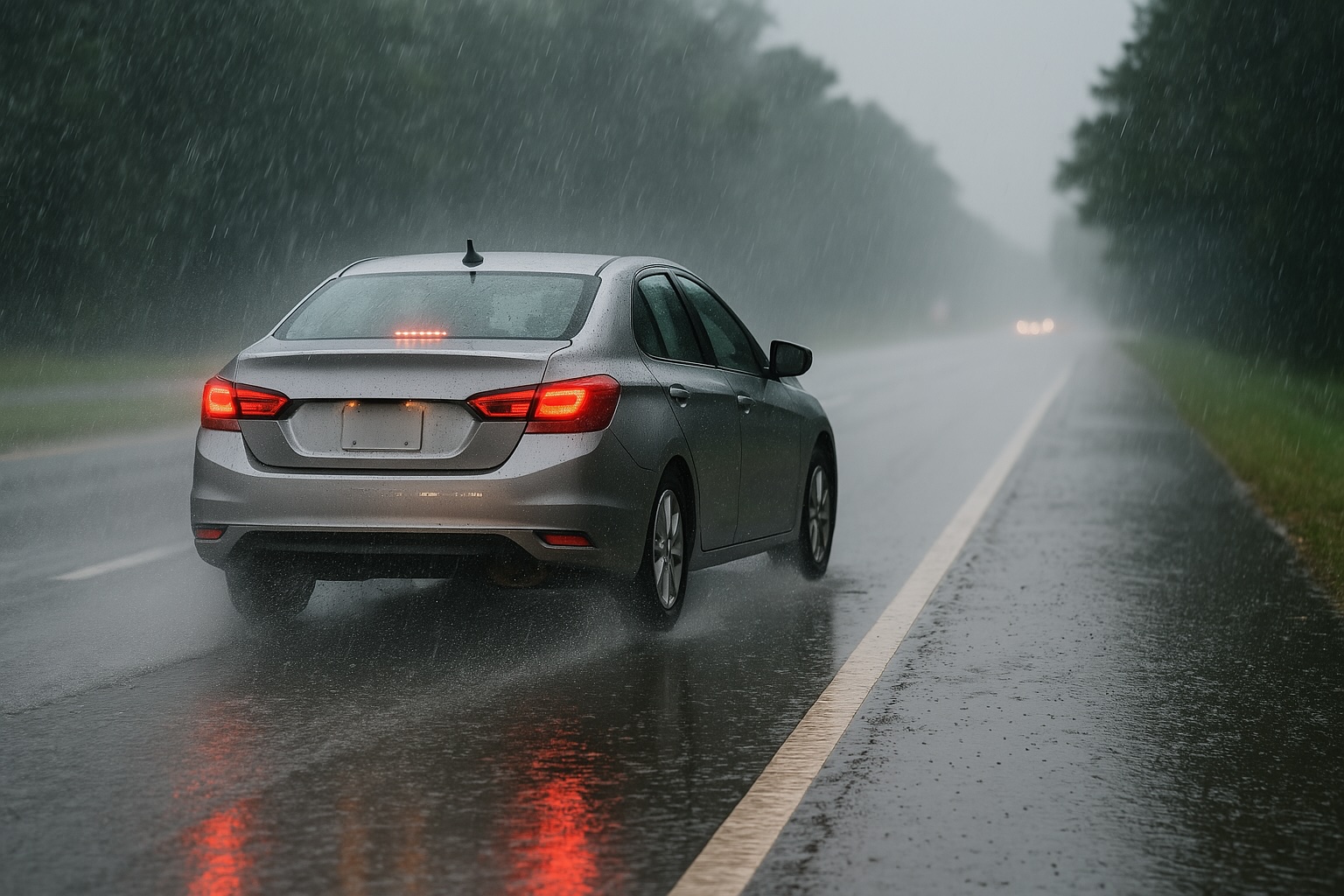Wet weather driving is a real challenge in Middle Tennessee—especially in April, when spring showers arrive in full force. While the blooms and warmer temperatures are welcome, rainy roads can become dangerous quickly. According to the Tennessee Department of Safety, over 28,000 crashes happen every year in Tennessee due to wet weather. That makes it critical to adjust how we drive during and after rainstorms.
In the first installment of our Spring Into Safety series, we’ll walk through practical steps you can take to stay in control when rain hits the road.
1. Wet Weather Driving Starts with Slowing Down and Spacing Out
When roads are wet, your tires have less grip—and stopping distances increase dramatically. Driving at or below the speed limit in rain is not just safer—it’s essential.
Leave extra room between you and the vehicle ahead—at least five seconds of following distance instead of the typical three. This buffer gives you more time to react if traffic suddenly stops or if your vehicle begins to skid.
Even on familiar roads or short trips, wet pavement can create unexpected hazards. A slower, more defensive approach helps you stay calm and in control.
2. Tire Health Is Key for Wet Weather Driving
Your tires are the only thing connecting your vehicle to the road. If the tread is worn or the pressure is too low, you’re at much higher risk of hydroplaning—where your tires lose contact with the pavement and ride on a layer of water.
Here’s what to check:
- Tread depth: Use a penny or tread gauge to make sure your tires aren’t worn out.
- Tire pressure: Changes in temperature can lower PSI—check at least once a month.
- Tire rotation and balance: These help ensure even wear and better handling in rain.
Regular tire maintenance can make the difference between staying safely in your lane or skidding out of control.
3. Avoid Sudden Steering, Braking, or Acceleration
Quick movements on a wet surface can easily send your vehicle into a skid. Instead:
- Accelerate gradually.
- Brake early and gently.
- Turn smoothly, especially around curves and intersections.
When merging or changing lanes, signal early and move slowly to maintain traction. If you do start to slide, steer gently in the direction you want to go—don’t slam the brakes.
Rainy-day driving is all about staying deliberate and smooth.
4. Use Your Headlights—But Skip the High Beams
In Tennessee, using your headlights during rain isn’t just good practice—it’s the law. It helps other drivers see you clearly through spray and fog.
Avoid using high beams, which can reflect off the rain and impair your visibility. Instead, keep your low beams on, even in daylight, whenever it’s raining or visibility is reduced.
Also make sure your windshield wipers are in good shape. If they leave streaks or squeak, it’s time for a new pair.
5. Wet Weather Driving Means Watching for Standing Water
Even a shallow pool of water can cause hydroplaning. And in some areas, heavy rain can lead to flash flooding—especially near rivers, low bridges, or underpasses.
If you see standing water:
Slow down before entering.
- Never assume it’s safe to cross.
- If the water looks deeper than a few inches, turn around and find another route.
Flooded roads may hide potholes, debris, or fast-moving water beneath the surface. As Tennessee officials say: Turn Around, Don’t Drown.
6. Stay Informed Before You Head Out
Before you drive in April showers, check the weather and road conditions—especially for longer trips or rural routes. If storms are expected, consider delaying your drive until conditions improve.
Tennessee drivers can dial *THP (*847) to report road hazards or get help from the Tennessee Highway Patrol.
It’s also a good idea to have a rainy day emergency kit in your vehicle, including:
- A small flashlight
- Rain poncho or umbrella
- Basic tools
- Reflective triangles
- Towel or blanket in case you get wet
Being prepared turns inconvenience into confidence.
Conclusion: Stay Safe, Stay Calm, Stay in Control
Rain may be part of the beauty of spring—but it doesn’t have to bring danger. By adjusting your habits, checking your tires and wipers, and staying alert, you can navigate wet roads with safety and confidence.
At Stillman & Friedland, we’re here to help Middle Tennessee drivers protect what matters most. If you or someone you love is injured in a weather-related accident, reach out to us. We’ll review your case for free and guide you every step of the way.
📞 Call us today at 615-244-2111 or use our online contact form to get started.
Because we care…
Stillman and Friedland







